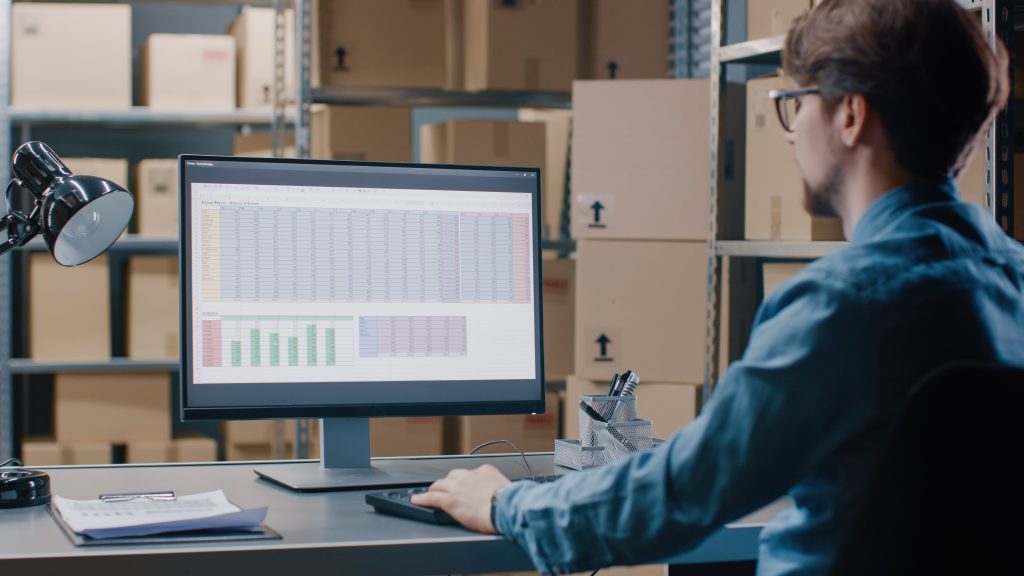Less than truckload (LTL) shipping is a cost-effective, efficient, and reliable shipping method that you can use to deliver small quantities of freight to downstream members of the supply chain. Like all other forms of shipping, LTL shipping orders can be tracked.
Familiarizing yourself with the various LTL shipping tracking strategies can help you evaluate your supply chain visibility and determine whether the tactics you are using provide adequate insights into your distribution network. On that note, let’s take a closer look at LTL shipping and some of the most common ways it is tracked.
What Is LTL Shipping?
LTL shipping is the process of shipping freight that does not consume an entire 48’ or 53’ trailer. Typically, LTL freight is secured to a pallet (or several of them). This shipping strategy is useful when you need a cost-effective means of delivering small quantities of freight to a supplier, warehouse, or retailer.
In addition to being cost-effective, LTL freight is also quite easy to track. Over the last decade or so, tracking techniques have become increasingly sophisticated. Some carriers can even provide real-time status updates about your LTL shipping orders.
Common LTL Shipping Tracking Methods
To track your LTL shipping orders, you will need one of the following:
- Bill of lading number
- PRO number
- Purchase order (PO) number
- Shipment reference number
- Pick-up date range
Once you connect with a shipper and create a client account, you will have access to these various numbers. Let’s take a closer look at what other information is associated with each of these numbers:
BOL Number
The bill of lading or BOL number is one of the best ways to track your LTL freight. The bill of lading number is also used to access a digital copy of your BOL. The bill of lading includes essential shipment details such as:
- Contact information for recipients and shippers
- Shipment origin and destination
- Package weight and dimensions
- Declared value
- An itemized list of items contained in the shipment
The BOL number is perhaps the most valuable piece of information your shipper will provide you when accepting your freight. However, should you lose your BOL or get locked out of your account, you may be able to access tracking information with one of the numbers mentioned below.
PRO Number
Most carriers will assign a “progressive” or PRO number to your shipment. This number should enable you to access the carrier’s self-service portal and get detailed information about your freight’s location. PRO numbers are incredibly useful, as you will no longer have to email or call your shipper to get status updates. Instead, you can simply log into your account and query the information yourself.

PO Number
Purchase order numbers are an alternative tool for tracking your LTL shipment. Most carriers allow you to query orders by PO number, PRO number, or BOL number. The purchase order number should also populate information about your shipping costs.
PO numbers are a good backup option if you can’t locate your BOL or PRO number.
Shipment Reference Number
Shipment reference numbers are precisely what they sound like. These unique numbers are assigned to your LTL shipping order and can be used to access location data for your freight.
To minimize redundancy, some carriers may not assign a dedicated reference number. Instead, the PO or PRO will also serve as your reference number. For specific information about reference numbers, you will need to contact your carrier.
Track LTL Shipments in Real-Time
Virtually every carrier uses one or more of the numbers mentioned above to facilitate LTL shipping order tracking. That said, not all carriers offer real-time GPS freight tracking.
If you want to maximize order visibility and promote shipment transparency, you should consider partnering with a provider that offers robust tracking capabilities. Doing so will enable you to precisely monitor the status of your freight, provide updates to customers, and streamline your supply chain.
Contact R2 to determine what type of tracking is best for your specific shipment. We’d be glad to help.





